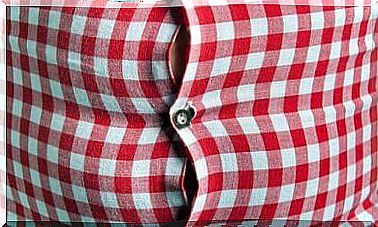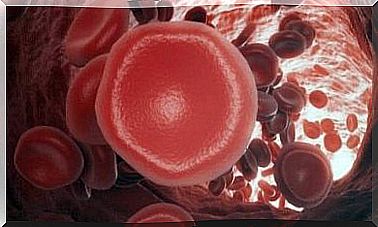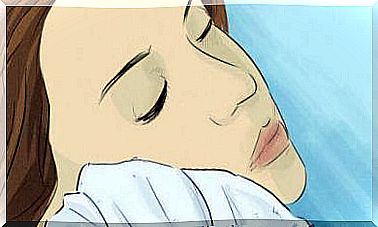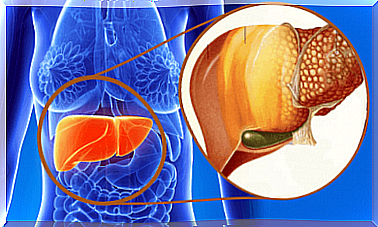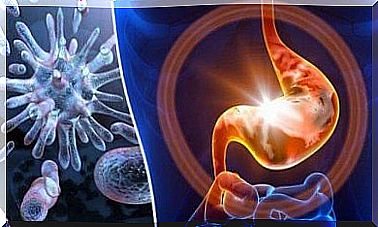All About The Knee Sprain
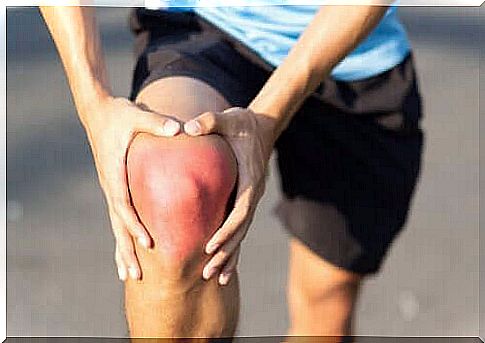
A knee sprain is actually a collective term for several specific injuries that occur in this joint. A knee sprain as a whole does not actually exist, as the treatment depends on the injured ligament. In fact, this is a very complex body part, especially in the soft tissues.
Doctors consider it a sprain when the ligaments are stretched beyond the limit of what they can handle. They exceed their limit, resulting in an injury. This leads to the loss of their characteristic elasticity.
In the case of the knee, the cruciate ligaments (which are inside the joint), the external lateral (on the outside of the knee), or the internal lateral knee ligaments can be strained.
Causes of a Knee Sprain
Knee sprains can have multiple causes, especially when we consider that each ligament has its own mechanism that causes it to become damaged. The cruciate ligaments are not injured in the same way as the lateral knee ligaments.
Athletes are most exposed to this injury and within any discipline there is a greater or lesser risk of stretching some tissue.
- For example, contact athletes such as football players are at high risk of cruciate ligament injuries.
- As for the lateral ligaments, people who play a sport like rugby are prone to sprains due to the side impacts between players.
However, it is also possible to sustain injuries at home and through daily accidents. For example, think of a foot that gets stuck behind a loose tile and that causes the lower limb to turn around. Another common cause is in frontal motor vehicle accidents where the limbs are strained.
Degrees of Injury in a Knee Sprain
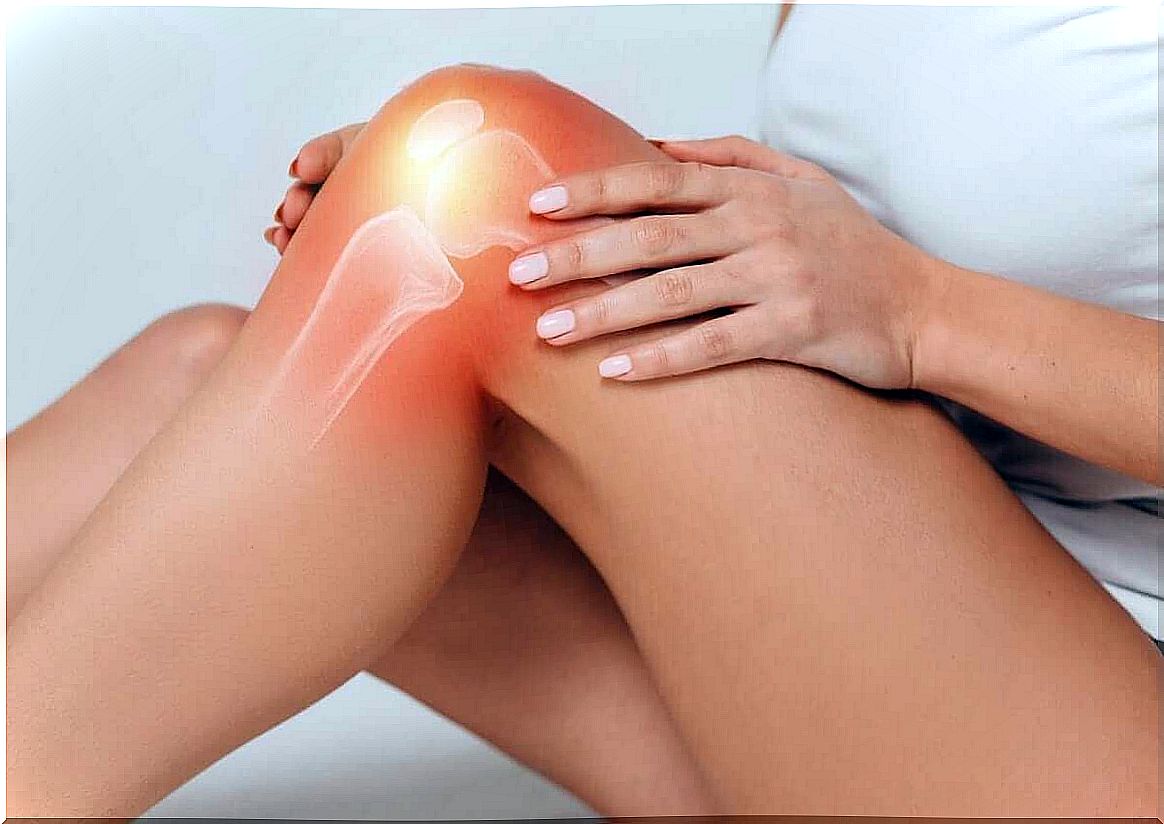
Knee sprains are classified according to their severity in degrees. This classification is widely used in the diagnosis of ligament sprains and largely determines the treatment.
First degree sprains
A first-degree knee sprain is the mildest form. In general, a person who has a first-degree sprain will experience tolerable symptoms consisting of mild pain and a mild degree of immobility.
- This injury occurs when a person stretches some fibers of the ligaments, but not all.
- There is also no tear, so a hematoma is unlikely to appear in the area.
Second Degree Sprains
According to the traumatic classification (Spanish link), this degree of knee sprain implies a rupture of more than half of the involved ligament.
- The functional limitation is moderate and the activity cannot be continued.
- The pain is disabling to the point of forced rest.
Third degree sprains
The most serious form is the tearing of the ligaments. It is often a complete tear of one of the cruciate ligaments or the lateral ligaments. The situation is serious and usually involves surgery to repair the damage.
- The individual can no longer use his knee until he rests and can heal (Spanish link).
- Hematomas may appear, indicating serious damage.
Symptoms of a knee sprain
We can say that pain is the hallmark sign of sprains, regardless of the ligament involved. What can vary is the location of the pain and its aggravation by movement. The cruciate ligaments (Spanish link) give problems with moving the foot back and forth, while the other ligaments give this with lateral movements.
The functional limitation depends on the degree of severity of the sprain. With a lighter form you can still walk, but not run. Rest is in principle mandatory from a second degree sprain.
The knee and soft tissues may swell. When the leg is elevated, fluids are redistributed. This prevents the knee from swelling very seriously. This also relieves the pain. With insufficient rest, the swelling in the knee increases and puts pressure on the nerves and blood vessels.
The hematoma is variable. Ligaments do not have vascularization, so damage to the ligaments does not cause bruising, although the surrounding tissues do contribute. With second and third degree sprains, it is common to observe changes in the color of the skin.
Possible treatments after a knee sprain
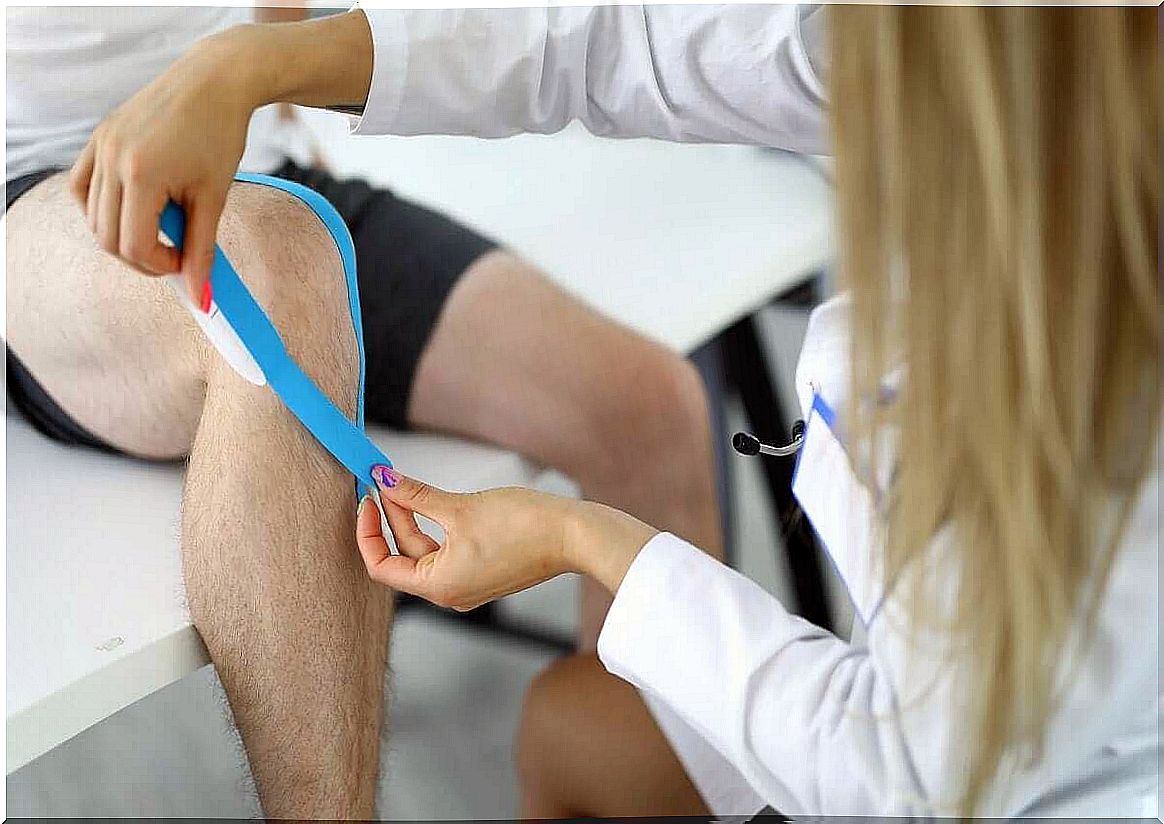
While the treatment of knee sprains depends on the ligament affected and the degree of severity, a number of measures are quite common for all forms. We will discuss these below.
Medication
Painkillers and anti-inflammatories are prescribed by treating physicians for symptom relief (Spanish link). They don’t solve the problem, but they do relieve the pain.
Peace
This is one of the most important keys to recovery. We need to rest the joint to promote natural healing. If there is a total rupture, rest is necessary before surgery can be done.
Immobilization
The use of a compression bandage (Spanish link) can aid in the reabsorption of the fluids, as well as put pressure on the knee to relieve pain. Elastic knee braces are an accessible option for first-degree injuries. In more severe cases, specialists opt for a splint or an external guide system to ensure stability
Surgery
If a ligament is torn, it usually requires surgery (Spanish link). It is then necessary to suture the torn ligaments. The trauma surgeon will decide the best technique to aid later recovery. As with a complicated variant, recovery is usually slow.
Recovery from a knee sprain
The recovery process from a sprained knee goes through several stages. The first face consists of rest, which is mandatory for almost everyone. Patients must respect this to promote recovery that will restore their quality of life.
In any case, take into account a slow recovery. One month is the standard time, but if you’ve had surgery it can take twice as long. You may even have to wait much longer if you’re considering resuming demanding sports activities, which involves a rehabilitation period that can last from 3 to 6 months (Spanish link).
Physiotherapy determines the approach. Mechanical and manual maneuvers can be performed or shockwave therapy can be used. The patient will have at least 10 sessions.
Can Knee Sprains Be Prevented?
In the sports environment, the prevention of practice-related injuries is a topic that is mentioned in numerous studies (Spanish link). The truth is that knee sprains can often be prevented by taking precautions during exercise, warm-up and muscle exhaustion.
Regardless, there are accidents that, as the name implies, are simply unavoidable. We can reduce the risk of an accident if we wear appropriate footwear, but that does not eliminate all risks. Maybe someone bumps into you and there’s nothing you can do about it.
The physical condition is also a protective factor. People with trained muscles in the lower limbs are less likely to have a sprain because these tissues function as joint stabilizers (Spanish link).
In case of pain or inflammation of the knee , it is advisable to consult a specialist. You may not have felt a sprain when the problem started and it may develop slowly. A timely consultation is one way to prevent greater damage.



